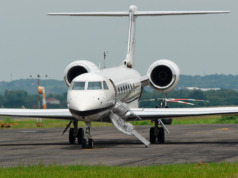The current pandemic caused a drop in turbine aircraft flying of more than 25% in March 2020, compared with March 2019, according to aviation safety and data company Argus International. Are you among the many owners now contemplating terminating, laying off, or furloughing members of your flight crew? If so, consider these three things before making a decision.
If you’ve reduced or ceased aircraft use due to the pandemic, you likely are considering cost-saving measures including workforce reductions. Those reductions probably include flight crew, and may include permanent measures like terminating employees or temporary measures, i.e. furloughs or layoffs.
Whether you employ the flight crew or they are employees of a management company, you have influence in any change in their employment status. Before making a decision and/or exerting your influence, it’s important to consider: whether contractual obligations are triggered, risks that the employee may seek alternate employment, and whether workforce reduction precludes or limits benefits available to your business under the Coronavirus Aid, Relief and Economic Security Act (“CARES Act”).
1 Are you required to pay severance or other benefits to employees?
First, review contracts with your flight crew. If the crew is employed by a management company, review the management agreement. Does your business have obligations to keep the flight crew members employed for a specified time period, pay severance on termination, or continue benefits following a change in employment status? Generally, employment is typically at will; an employer is not obligated to provide the above absent a written contract with the employee. In addition to reviewing the contracts, it is imperative to also review employee handbooks and manuals. If you have a policy that provides for any of the above, provide the benefits as specified in the policy.
In addition to providing these benefits, you also may be required to pay accrued but unused vacation time to departing employees. Vacation time must be paid upon departure if you have a contract that so requires or you are required by state law to pay accrued but unused vacation time upon an employee’s departure.
2 The risk that an employee is not available to you when you are ready to start flying again.
You may be exploring furlough or temporary layoffs as a means of avoiding terminating your flight crew. Terminated, furloughed, and laid-off employees are entitled to expanded unemployment benefits under the CARES Act. Those expanded unemployment benefits, however, may not fully compensate the employee for all their lost wages. Thus, he or she may look elsewhere for work. Even if your employee isn’t actively seeking alternative employment, a competitor may make an offer too good to refuse — and as a result, hire away your valued employee. In that situation, you will find yourself needing to swiftly return to normal operations but without a valued, trained, current, and trusted employee — and needing to incur additional training and other costs and risk associated with hiring anew.
3 Reduction of your work force may limit or reduce relief available to you under the CARES Act.
Many businesses are eligible for relief as a result of the CARES Act. That relief potentially includes the Paycheck Protection Program and Loan Forgiveness, and the Employee Retention Credit. If you reduce your workforce or decrease employee wages, you may risk becoming ineligible or reducing the benefits otherwise available to you. Thus, be sure to consider both your eligibility and the impact that workforce reduction may have on the benefits you expect to receive.
When contemplating reducing your workforce, carefully evaluate these three questions to determine what is most cost effective. The calculation may prove surprising. Careful review and consultation with your counsel and accountant may persuade you that you are better off maintaining your workforce during the pandemic. BAA
Alison L. Squiccimarro, attorney with the Law Offices of Paul A. Lange, focuses her practice on aviation related commercial litigation with an emphasis on FAA and DOT Regulatory Issues, Airports, Insurance Coverage, and Employment matters.





